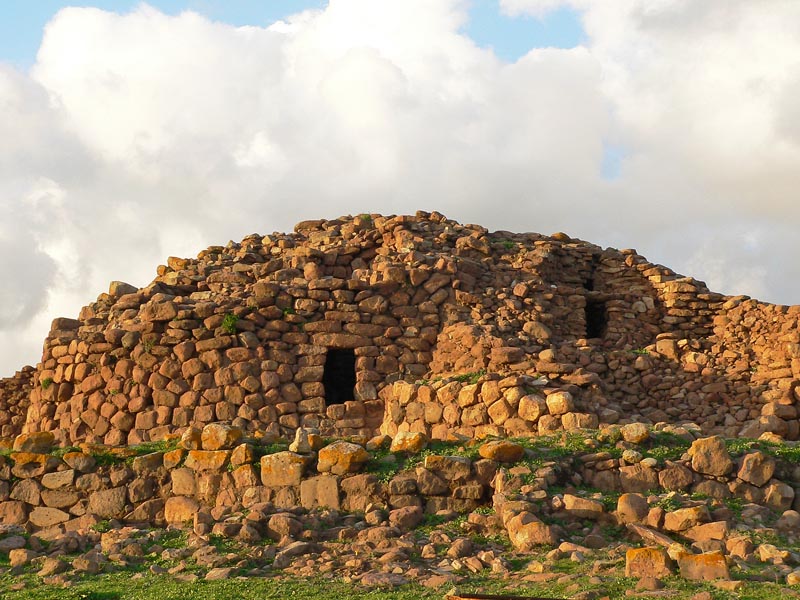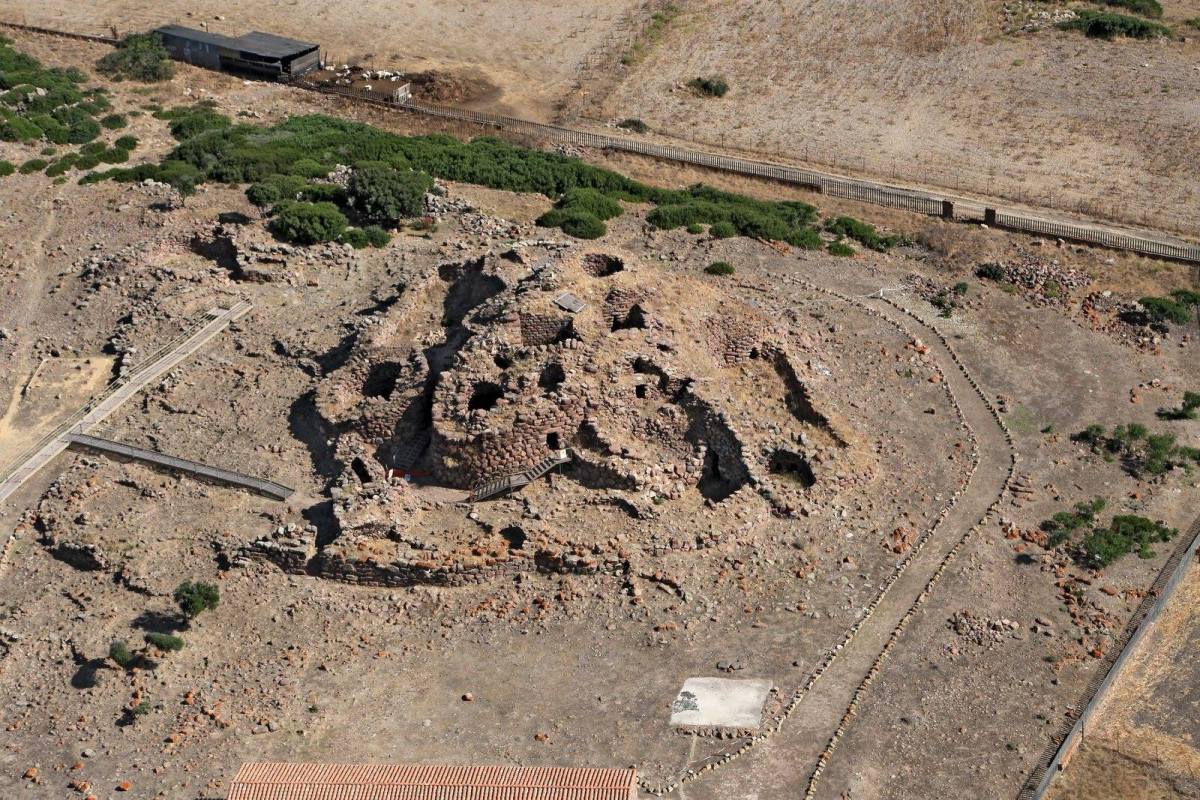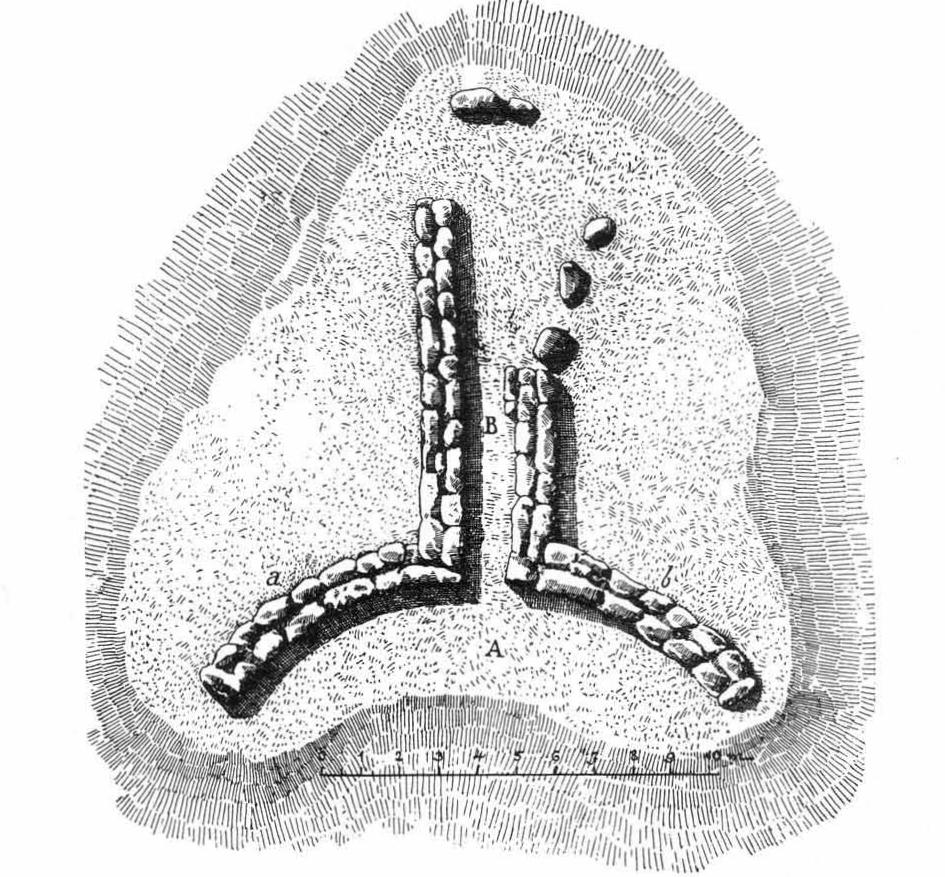Seruci Nuragic Complex

A vast monument that perfectly documents the architectural capacity and social and spiritual life of the Nuragic civilization. The Complex of Seruci extends for six hectares in the territory of Gonnesa, and is made up of complex nuraghe, a rampart, an extensive village of huts and a Giants' tomb. You will reach it from the welcoming center of the Iglesiente, from which it is about six kilometers away, along the provincial 82 towards Portoscuso.

It was certainly a complex nuraghe, penta or hexalobate, whose construction presumably began at the end of the 14th century BC, in the late Bronze Age, and whose life lasted until the 10th century BC, in the final Bronze. The central tower (keep) with a projecting dome was originally composed of three superimposed cells. The keep, with a base diameter of about 60 meters (!), Rises about 15 meters over a relief, and is still surrounded by a rampart with five (or six) towers, some in a good state of conservation. Their tops had to be crowned with stone battlements, recovered at the base of the structures during excavations, which began with the discovery of 1897 and carried out by Antonio Taramelli (1917), then resumed at the end of the 20th century and continued at the beginning of the 21st century, up to a very recent restoration.

Inside the tower you will visit numerous cells, the floors of which were perhaps lined with cork to 'isolate' the rooms. In a cell on the first floor, closed with a dome, you will be able to notice and touch the totemic foundation stone: a smooth ax head inserted between the stones of the mural. Each gap between one segment and the other hides secrets. At the north exit of the temple you will see a large ablution tank, which receives water from a well covered in stone, about ten meters deep. In front of a spectacular terraced theater where the villagers attended and participated in the water rituals and cults of the Mother Goddess.

It was perhaps the 'meeting hut', the largest, likely to serve as a meeting place for the community, to discuss decisions to be made for the village, which extends on the slopes on which the nuraghe stands. Dating back to the late Bronze Age, it is one of the largest Nuragic 'quarters' in the whole of Sardinia with over one hundred circular huts divided into six blocks. The residential 'agglomerations' are of similar size and with the same 'ring' layout, distinct but interrelated by streets, arranged in groups. In some of them we note the use of rare architectural solutions: they have remains of small internal dividing walls and additional rooms of various shapes, connected to the usual residential ones.

A block consisting of 14 rooms arranged around a central courtyard was excavated and investigated: this is the typical housing structure of the last nuragic phase. In the center of the village, you will observe the square, a place of commercial exchange. And then, in addition to the meeting hut, there is the temple, where the remains of ritual sacrifices were found, the sacred hearth and the 'hut of the baths' with the central basin full of water, in which the red-hot stones were immersed. to release the steam. From the circular seats around it, perhaps the 'sweat rite' was practiced.

Climbing the hill overlooking the complex, you will find a Giants' tomb, a burial place serving the village. From the detected position of the nuraghe you will observe the entire surrounding area, including two other contemporary settlements, the nuraghi sa Turrita and Gennerei, with which the Seruci must have been connected.

Video: Seruci Nuragic Complex
Map: Seruci Nuragic Complex
Address: Località Seruci, 09010
Gonnesa (SU) Sardegna
Latitude: 39.24899666788977
Longitude: 8.42452347278595
Site: https://www.donnanuragica.com/...
vCard created by: Maura Porru
Currently owned by: 00003057
Type: Manufactured
Function: Archaeological site
Creation date: 25-04-2022 11:54
Last update: 26/04/2022
vCard Value: $6,00
vCard Views: 629